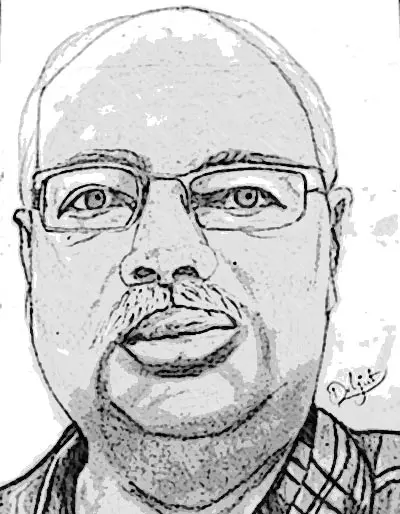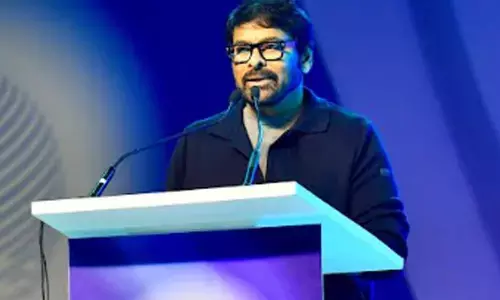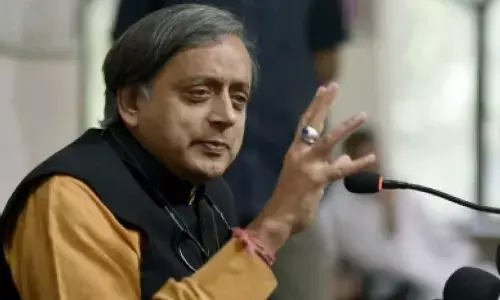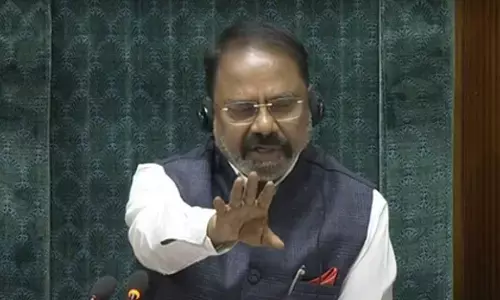Central Vista, a need more than an expense
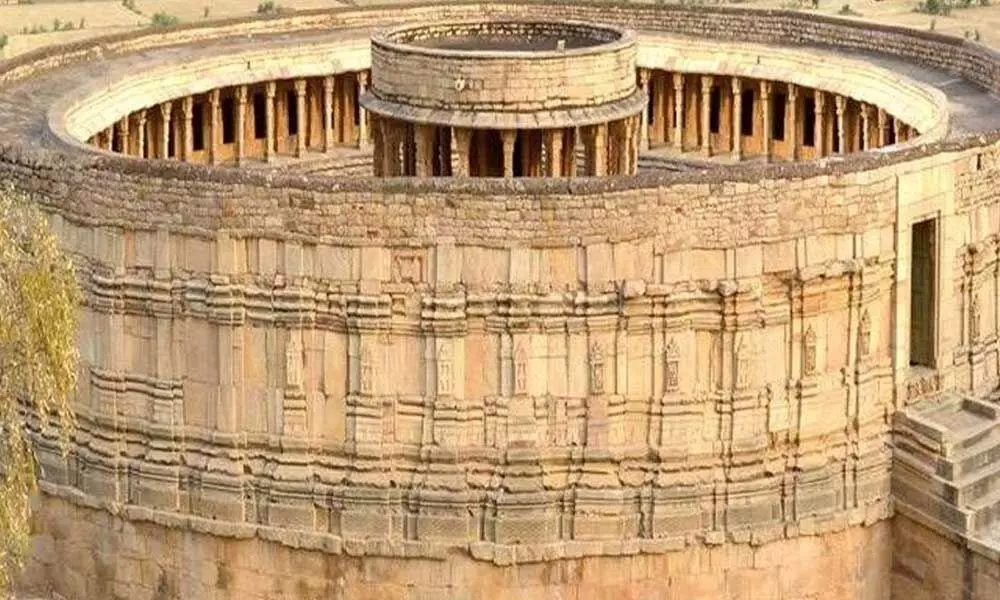
Central Vista, a need more than an expense
Land grabbing and encroachments go on unhindered in our country and everyone knows how it happens and the people behind such acts and why the executive is unable to stop the menace
Land grabbing and encroachments go on unhindered in our country and everyone knows how it happens and the people behind such acts and why the executive is unable to stop the menace. But when it comes to constructing a new Parliament building to meet the present and future needs, opposition parties have started raising thousand objections. If they feel what the government is doing is wrong, they should offer an alternative solution to it. That, unfortunately, no one does.
All those who are objecting to the construction of new Parliament building should explain how many times they had changed their houses and why? How many times they have got their office interiors changed and why? If they want upgradation of their properties, why not have a new building for Parliament where if new facilities are properly used, they contribute to the growth of the country in a much-efficient manner. It's time the political parties stop looking at everything from the view of their political narrow mindedness.
Those who have seen the present Parliament building and have been privy to work from there, whether it be the law makers, the officials or the media very well know the existing problems as the building is more than 100 years old. The law makers who come in chauffer driven cars may not know the problems of parking but for all others it is a daily nightmare. Fire safety is certainly a major concern since lot of load had to be added over the years to meet the growing demands. Lot of external wiring also had to be done. Acoustics is another concern.
Both the Houses have witnessed members breaking mikes. The century-old building though looks strong from the outside had to undergo many changes in the last seven decades. Electrical, air conditioning, plumbing systems are inadequate. Even security management in the old building is a matter of concern. The seating arrangements are cramped and cumbersome, there are no desks beyond second row and movement is extremely constrained.
To top it all, the political parties, which have been demanding that the number of Lok Sabha constituencies be raised to 1,000 from present 543 and a corresponding increase in Rajya Sabha's strength arguing that the India has a disproportionate representation of elected representatives should answer where the new members will sit. The present Parliament building cannot accommodate even if there is an increase of one more member. With the number of seats in Lok Sabha likely to be increased after 2026, it becomes imperative that a new building with all modern amenities be constructed.
The government says, currently, the Ministries are spread over 47 buildings and that there is a shortfall of 3.8 lakh sq mts of office space. So, this aspect also needs to be taken into account. Once the number of seats go up, the size of the cabinet will also increase. Where will the new ministers sit? Under the trees in the Central Vista?
The additional office space in the newly constructed Parliament Annexe and library building is "insufficient to meet the requirements". The House of Commons has a library which is an information resource of the lower house of the British Parliament. The library in the existing Parliament house also has great treasure of information and was used more regularly by veteran leaders like Indira Gandhi, Somnath Chatterjee, LK Advani, Atal Behari Vajpayee, Jaipal Reddy, Pranab Mukherjee and many others. If it has to be further improved and if it has to meet the growing needs of the members, who would like to use the facility to enhance the quality of debates and discussions in the Parliament (though the number of such law makers has reduced), it is necessary to have an ultramodern library facility.
According to official records, "The existing Sansad building saw many twists and turns, akin to a racy thriller. Herbert Baker, the British architect, initially proposed on this triangular plot a plan with three wings. The present proposal of the new Parliament House is an uncanny throwback to this proposal. Lutyens, however, disapproved of Baker's design and instead proposed a circular, colosseum-like plan. Lutyens prevailed and Baker had to rework his original design."
The plan of the Parliament House is based on a circle that has an outer diameter of 174 metres. The three chambers were meant to house the Legislative Assembly, the Chamber of Princes and the Council of State. These are located within this circular plan with a 120-degree separation with intermediate courts between them.
The building was a technological marvel 100 years back and incorporated several elements of Indian architecture. The chambers were well designed and even had acoustic tiles to ensure that any speaker was heard by everybody in the house.
Post-independence, the Council House was renamed the Parliament House or Sansad Bhavan and the three main chambers namely the Legislative Assembly, the Chamber of Princes and the Council of States were repurposed as the Lok Sabha, the Rajya Sabha and the Library. The Central Hall was used for joint sittings.
The Parliament House is a living heritage site and has been witness to several historical moments, including Jawaharlal Nehru's 'Tryst with Destiny' and BR Ambedkar's Grammar of Anarchy' speeches. The Central Hall has witnessed intense debates and discussion during the drafting of the Indian constitution. The richly embellished portals have had several generations of distinguished parliamentarians passing through. Some prominent national figures are also immortalised here as busts, statues and portraits.
To meet the requirements of the changing situation, over period, several changes and upgrades have been carried out to the Parliament House. A building to house the Parliament library and an extension to the Parliament House Annexe have also been built to accommodate the changing requirements. But still, the members have been facing several problems in discharge of their duties.
Yet unfortunately, objections are being raised citing trivial issues without any proper reason. Some say that the ultrasonic waves to assess the structural strength of the building can be done. The question is not just that. It is not even whether the present building gave direction to the nation or whether it will witness making of Atmanirbhar Bharat as PM had said. The basic question is whether there should be a building with ultra-modern facilities or not.
It is surprising that no law maker never objects to raise in salaries and such bills get passed without a whimper even though it puts greater burden on the honest taxpayer. But when it comes to having a new building with all amenities, frivolous objections like damage to environment etc are raised and people knock on the doors of courts.
One would wish all the law makers cutting across party lines show real concern and protect the environment. We have seen how rock mining has led to damage to ecology. How mining of granite and other minerals has without proper checks and balances has damaged the environment. Successive governments failed to prevent degradation of forests. But objections are being raised regarding the Central Vista.
There could have been objections if the government had said that it would demolish the present building. In Telangana, the State government demolished the old secretariat buildings despite objections though they were less than 50 years old to construct an ultra-modern secretariat complex. But in case of Parliament, which is said was inspired by the Chausath Yogini Temple in Morena, Madhya Pradesh, the government said would be used for other activities after structural rehabilitation and renovation.
Interestingly, the Chausath Yogini temple is externally circular in shape with a radius of 170 feet and within its interior part it has 64 small chambers. Within the main central shrine there are slab coverings which have perforations in them to drain rainwater to a large underground storage. The pipelines from the roof lead the rainwater to the storage are also visible. The design of the temple has withstood earthquake shocks, without any damage to its circular structural features. The temple is in the Seismic Zone III. Hence many compare this temple with the present Indian Parliament building. Its time the country's law makers turn progressive and proactive.

